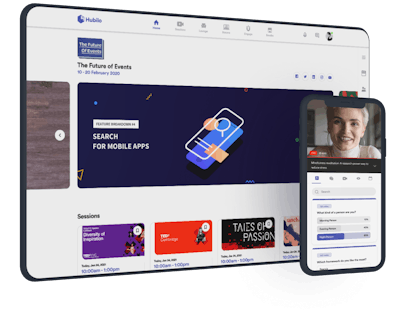
Cathy Song Novelli is the SVP of marketing and communications at virtual and hybrid event software platform Hubilo, which has a client roster including Amazon Web Services, Siemens, Roche and more.
Even before the pandemic canceled every live event on the planet, the virtual events industry was already one of the hottest trends marketers were embracing. According to Grandview Research, the global virtual events market size was valued at $77.98 billion USD in 2019 and was expected to grow at a CAGR of 23.2% from 2020 to 2027. Fast forward to May of 2020—when half of B-to-B marketers responding to a survey by Statista reported holding between 20 to 30 virtual events annually—and 21% (probably the same people who digitally transformed every other part of the marketing toolkit) reported hosting more than 30 virtual events each year.  Cathy Song Novelli, SVP, Marketing and Communications, Hubilo
Cathy Song Novelli, SVP, Marketing and Communications, Hubilo
It’s not just the fact that virtual events are easier to produce, at a fraction of the cost of traditional events. As with everything else we’ve digitally transformed in our marketing stacks, scalability and cost-effectiveness are table stakes. It’s simply that our audience is getting used to doing new things online. Whether it’s ordering groceries online, seeing your doctor on your computer or attending an event without having to awkwardly interact at the buffet table with strangers—people now view virtual as their new reality.
Let’s delve into some of the reasons why some attendees may prefer the option of virtual or hybrid events over solely in-person ones.
Virtual events allow attendees to retrieve content most relevant to them, and allow event organizers to use data to enhance future event experiences.
How exhausted were you after attending your last three-day event, replete with keynotes, multiple tracks and so many people that you couldn’t meet them all even if you wanted to? While live events are immersive and engaging, it can be difficult to wade through all the content to find the information that’s actually relevant to you as an attendee.
With a virtual event platform, attendees can personalize their event experience to hone in on the most important topics. Event organizers, using the data and analytics that event platforms provide, can continuously optimize their content and format to what the audience prefers, making every event better than the last.
By that logic, some audiences may get more out of virtual and hybrid events than purely in-person events.
Witnessing the audience interaction in person is one thing, but being able to ask the speaker directly, or comment with others on the presentation creates even more understanding about the subject, identifies valuable professional colleagues to meet later, and tells event organizers what kind of content you want to see so they can provide you with better content in future events. In addition, having the notes, presentations and transcripts at your fingertips can be tremendously valuable to conference attendees—especially for those who need to share the insights with others back at their offices.
Moreover, attendees can curate their content experiences with the events, ensuring that they maximize their valuable time. They can be directly connected to and meet one-on-one with only the people that benefit them the most, rather than having to hope to meet valuable partners. Or, for a hybrid event, they can meet with them virtually and set up a time to meet in person the next day, or vice versa. Plus, as event organizers become savvier with virtual events, attendees are getting more information in interesting ways to hold their attention and encourage engagement, rather than just another PowerPoint deck.
The world is already networking virtually.
Whether it’s on LinkedIn, Facebook, Twitter or even meeting your life partner on Match.com, there is no shortage of examples of people meeting virtually and following up with an in-person meeting (when it’s safe to do so, of course). But, in some cases, it’s simply not possible to meet in person due to resource limitations.
Event platforms today have built-in networking features such as interactive live sessions, lounges for one-on-one interaction, virtual booths, breakout rooms, demo rooms and more, giving you not one but several opportunities for interactions across the board. A virtual event platform also gives exhibitors their own profile that can be customized with company and product information, images and videos that help attendees understand what the exhibitor does, along with allowing them to interact through the breakout rooms and branded lounges where they can perform product demos and network with attendees, respectively.
Additionally, by removing travel barriers and expanding the geographic base of attendees, guests are more likely to run into new collaborators with diverse ways of thinking. And as hybrid events become more commonplace, you will also be able to connect with attendees in a physical event while attending a virtual platform and vice versa, resulting in twice the networking.
–
Will virtual be your new reality?
Virtual events generate engagement and unlock the power of connection nearer to the bottom of the funnel and for as little as 1/100th the cost of a live event. But—and this cannot be said enough—virtual events require more than a cheap and easy platform to execute well. Your audience doesn’t want another webinar. They want to be enthralled and captivated, and for that, you need more than just an intuitive platform, which should be table stakes. Be sure you’re also getting deep expertise, white-glove support every step of the way, and analytics that allow you to deliver better events time and time again.



















